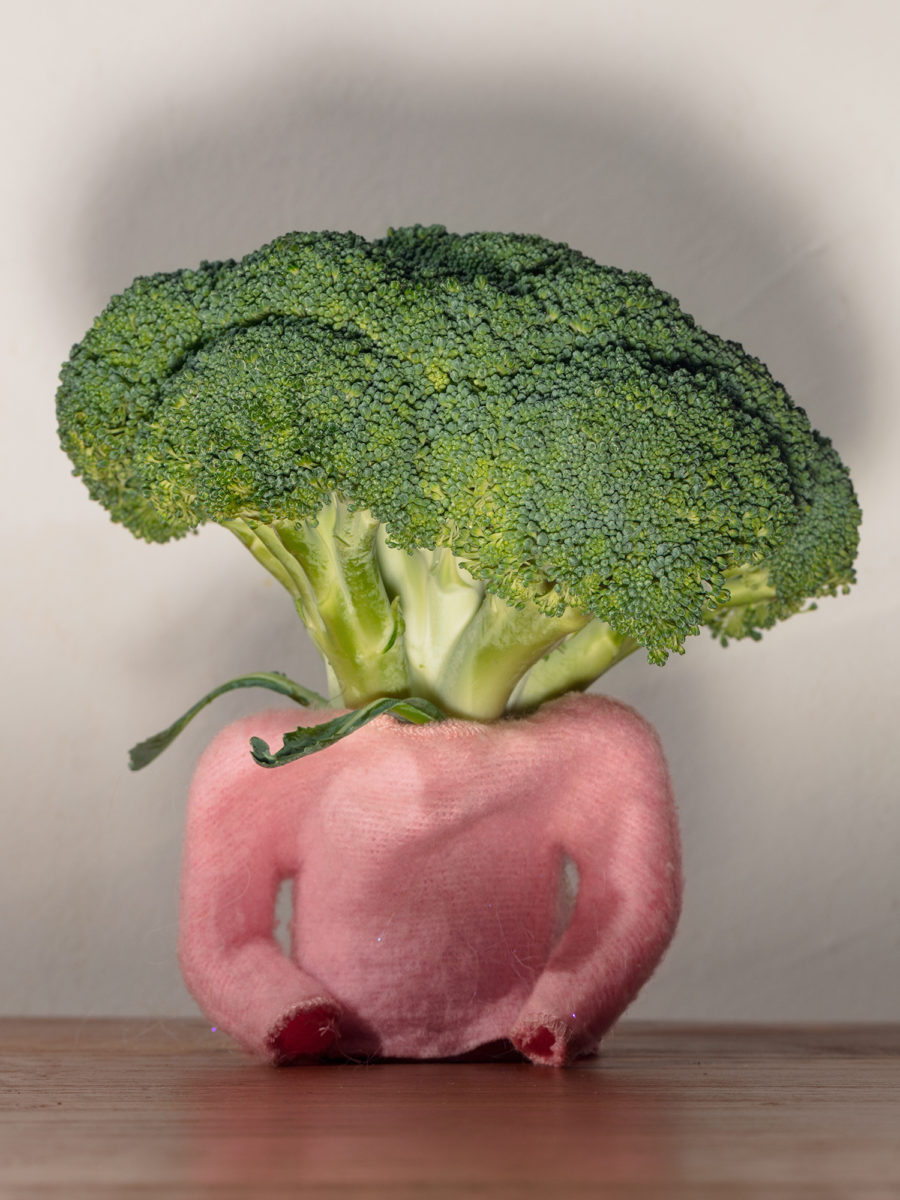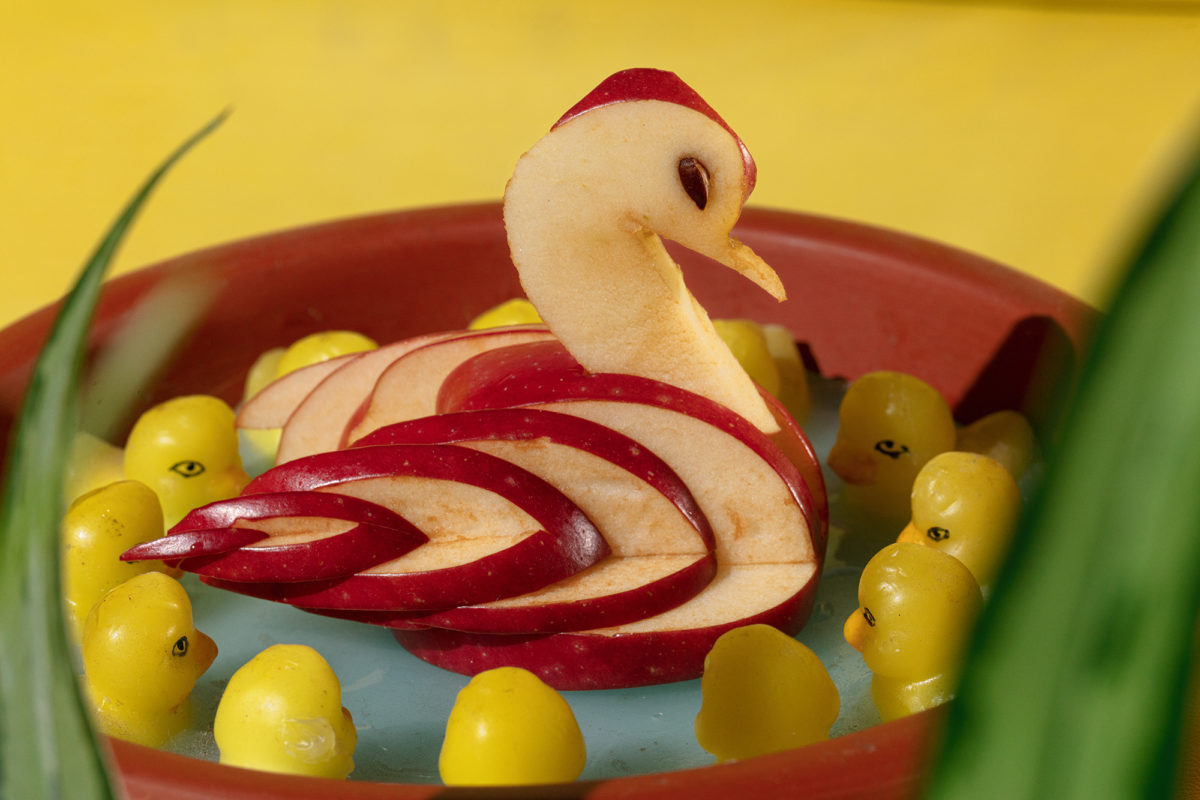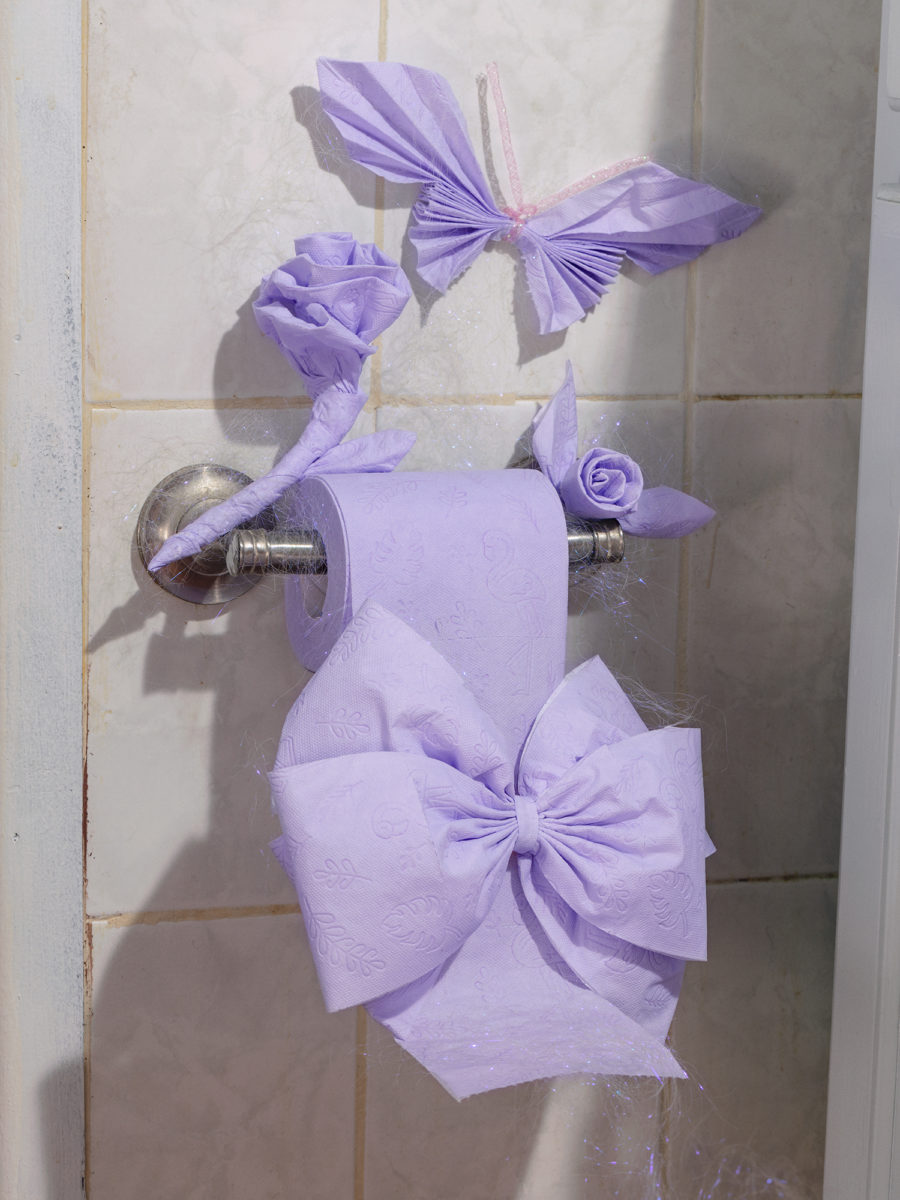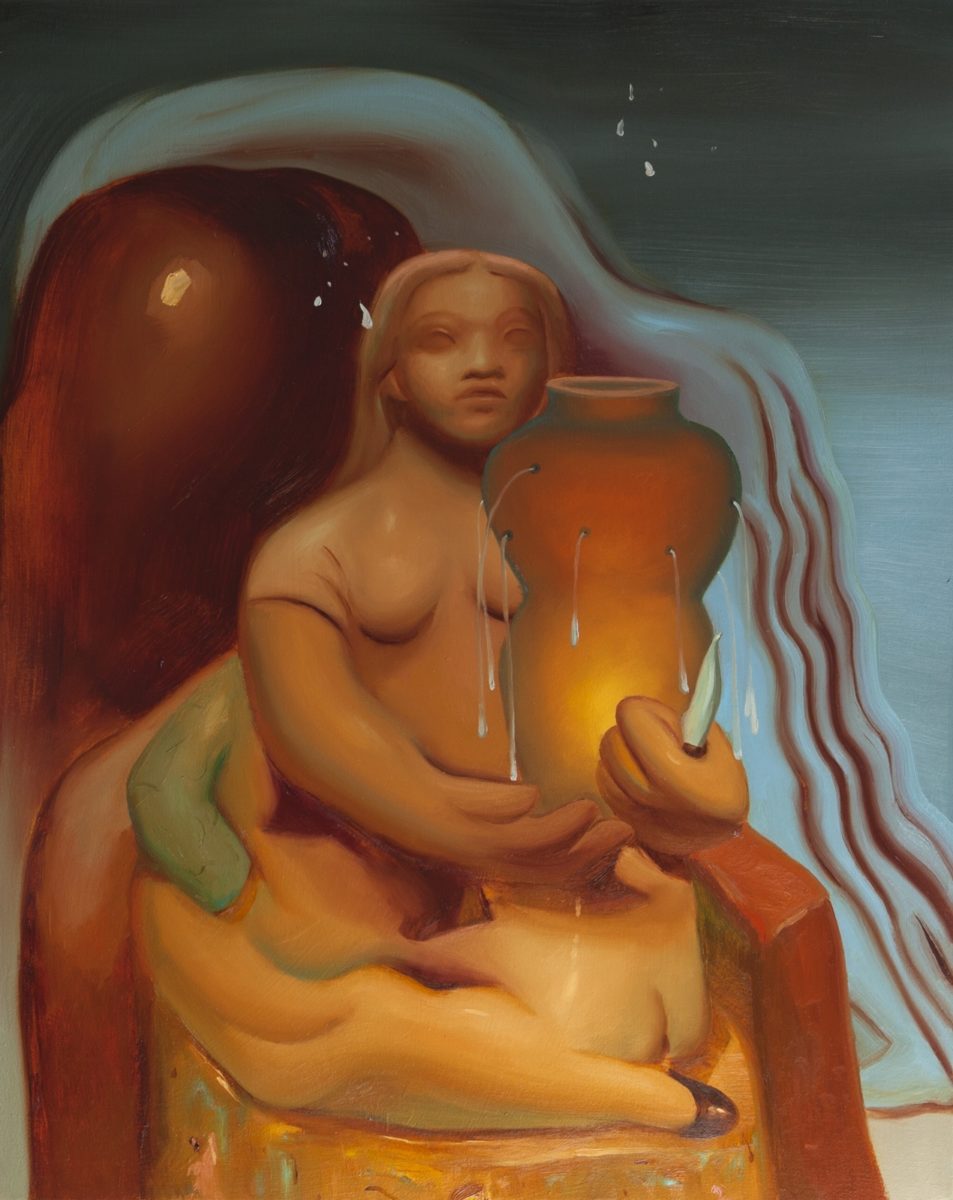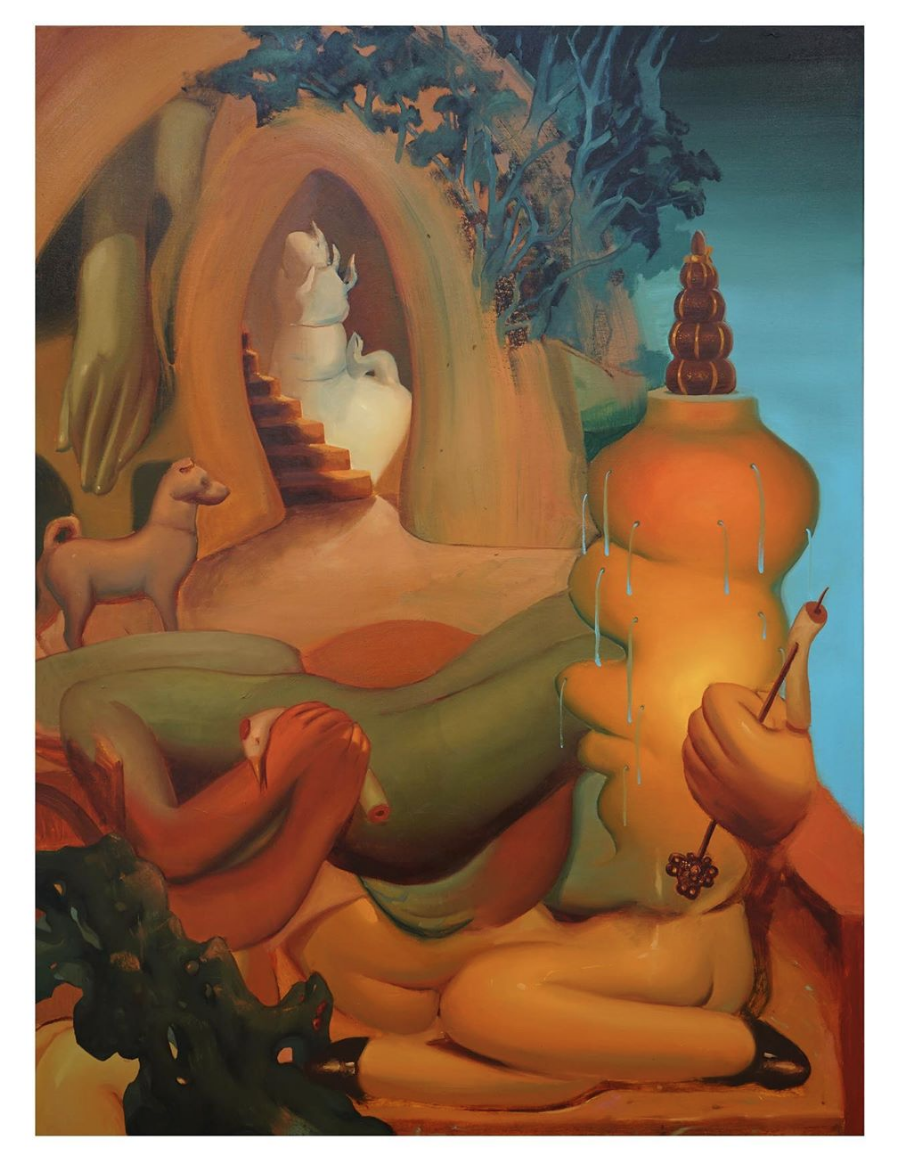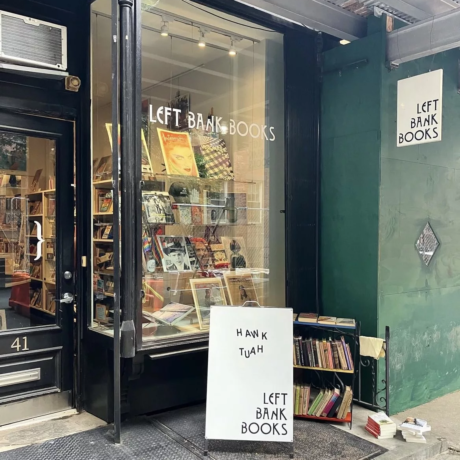
Painting: David Downes
Obviously it’s hard to avoid the C-word at the moment, so here’s a topical series of work by artist David Downes, who has high-functioning autism. The series of paintings detail his responses to coronavirus in colours that aim to add a sense of optimism to the whole thing. The works are both serious and playful, showing the virus as particles of ludicrous proportions—alien-like lifeforms floating around a ghost town city. Elsewhere, he elevates the quotidian realities of corona, like queueing at Tesco, into cartoonish dystopias. A new painting is released each day through social media, and the artist says, “My hope is that my art reflects a sense of reality and for humanity to heed Mother Nature’s warning”. (Emily Gosling)
Photography: David Brandon Geeting and Lina Sun Park
Currently living together in New York, David Brandon Geeting and Lina Sun Park have got incredibly creative with the ordinary items to be found lying around in their own flat. Self-Quarantine Residency is a wonderful photographic project which is currently shared on both of their Instagram accounts, bringing together objects that are both banal and beautifully designed, with luscious bursts of coloured light and a whimsical creative touch. They feature themselves in some shots too, dressed up in outlandish puff-sleeve dresses and suits; messing around with their cat; and snapping disembodied limbs creeping into the edges of still life images. These works capture the mundanity and potential creativity of isolation, and are a joy to look at. (Emily Steer)

Illustration: Lily Wong
New York-based illustrator Lily Wong references the visual language of East Asian image-making in her works on paper, weaving multiple narratives that are rich in coded symbolism. Her female characters push against the barriers erected in a variety of surreal scenes, from multi-tiered bathrooms to restaurants, sometimes frantic, otherwise exhausted and still. However, her most recent Built for Love series takes a more solitary view, focusing predominantly on a single figure, who appears to be seeking shelter in an anonymous enclave, surrounded by spider webs and consuming various fauna. These black-and-white images are somewhat animalistic, and speak to internalized anxieties and a fear of isolation
. Her exhibition at Kapp Kapp in New York is open by appointment only. (Holly Black)
- Dominique Fung, Force an Exit When Frozen in Time, 2019.
- Dominique Fung, Inside All of Humanity, 2020.
Painting: Dominique Fung
Second generation Chinese-Canadian artist Dominique Fung takes the often problematic depictions of the East in Western art—think Henri Rousseau
and Jéan Léon Gérôme and their exoticized paintings of far away lands—and reconfigures them through her own lens. Drawing on Orientalist ideologies and artefacts, she dismantles and reframes them within warm, luscious and surreal landscapes. The artist’s work was supposed to be on display until 12 April at London’s Mamoth gallery, in a group show called If On a Winter’s Night a Traveller. But for now, in these uncertain times, you can experience her work online, where her website and Instagram are crammed with beautiful close-ups and installation shots of her richly detailed pieces. (Rebecca Fulleylove)

Photography: Luis Alberto Rodriguez
People of the Mud is a new series by photographer Luis Alberto Rodriguez. The Berlin-based New Yorker with Dominican heritage spent three months with rural Irish communities in County Wexford, Ireland to capture the relationships between Irish culture, identity and the land. With a background in dance, there’s a real physicality to Rodriguez’s images as he portrays the stories of these communities through sports, dance and labour. Even in black and white, the rawness of scarred limbs and weathered faces contrasted with ballroom glamour is wonderfully conveyed. People of the Mud has just been published as a book published by independent London publishing house Loose Joints, meaning you can get properly up close and personal with Rodriguez’s images. (Rebecca Fulleylove)
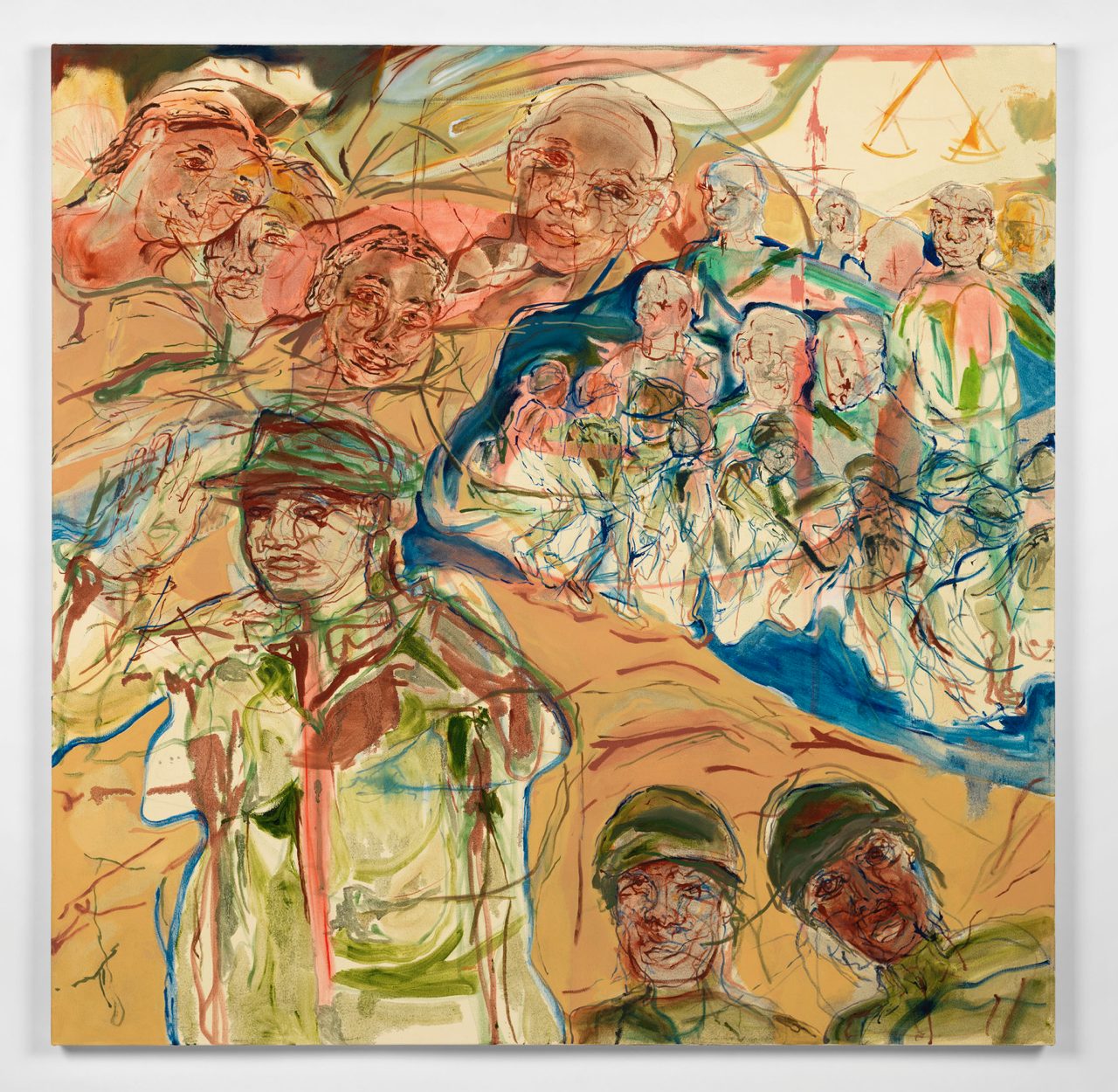
Painting: Chemu Ng’ok
Based in Nairobi, painter Chemu Ng’ok creates multi-layered compositions that grapple with her multiple identities, including the political landscape of Kenya and South Africa; the post-colonial discourse surrounding Rhodes University (where she studied); and more intimate, personal moments, where women braid their hair and children play. By combining scenes of conflict and comfort Ng’ok builds intricate psychological portraits that reveal the complexities of societal expectations, all visualised in riotous colour and nimble brushwork. (Holly Black)

Video / Film: Ja’Tovia Gary
“Do you feel safe?” This is the central question in The Giverny Suite, a three-channel video installation piece by Ja’Tovia Gary that shows the artist meet her subjects as they walk the intersection of Malcolm X Boulevard and W 116th Street in New York, and mediates on the safety and bodily autonomy of black women. The installation has recently been on show at Paula Cooper Gallery in Texas-born Gary’s solo exhibition, titled Flesh That Needs to be Loved. The show presented Gary’s characteristic merging of styles from animation, documentary, experimental film, and cinema verité; through which she “seeks to liberate the distorted histories through which black life is often viewed, while fleshing out a nuanced and multivalent black interiority.” (Emily Gosling)

Painting: Ishbel Myerscough
It’s the last couple of days to catch Ishbel Myerscough’s online exhibition at Flowers Gallery. The British artist’s paintings of herself and those close to her explore languid days at home, which sit somewhere between boredom and cosiness. She describes her sleeping and resting figures as “passing over from one state to another”, potentially waiting for something to happen, or “suspended” in time. There is a closeness and intimacy to the way that she paints people in her works, and her study of fabrics used on bedding, furnishings and clothing celebrates the beauty of domestic and everyday surroundings. (Emily Steer)
